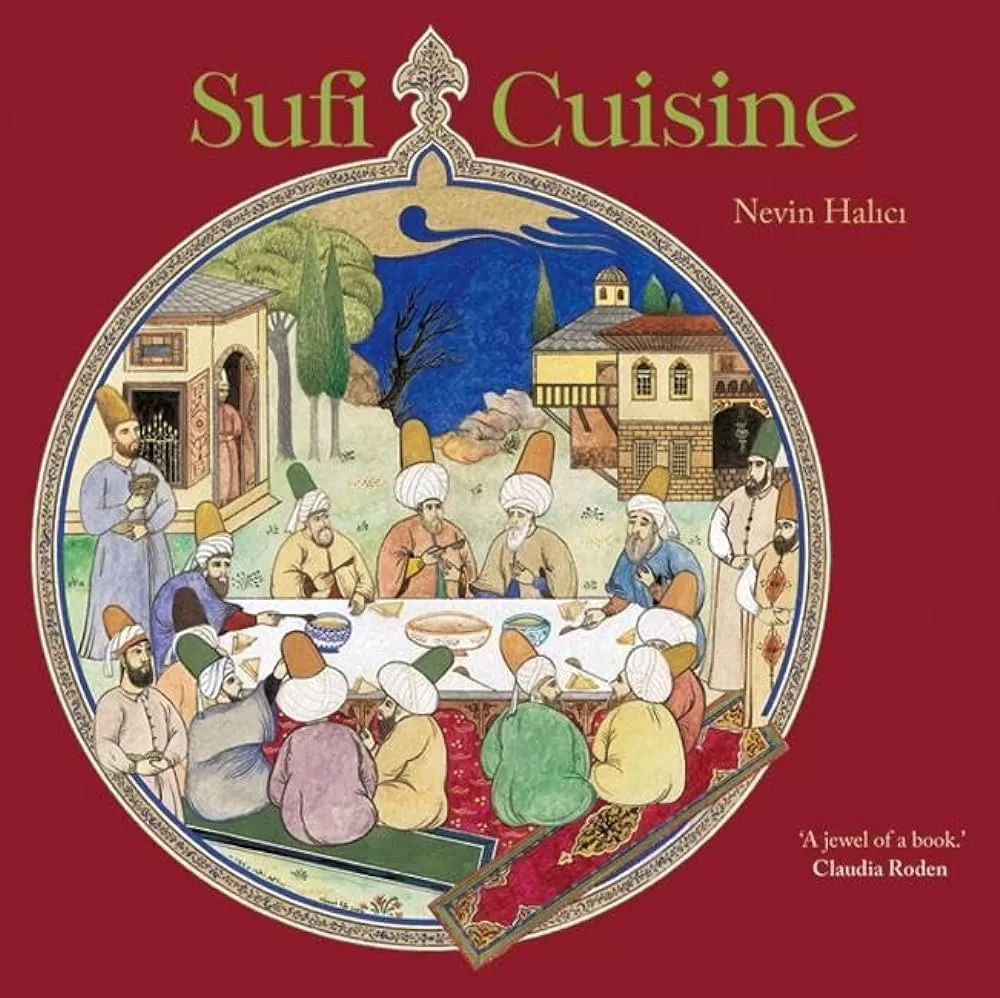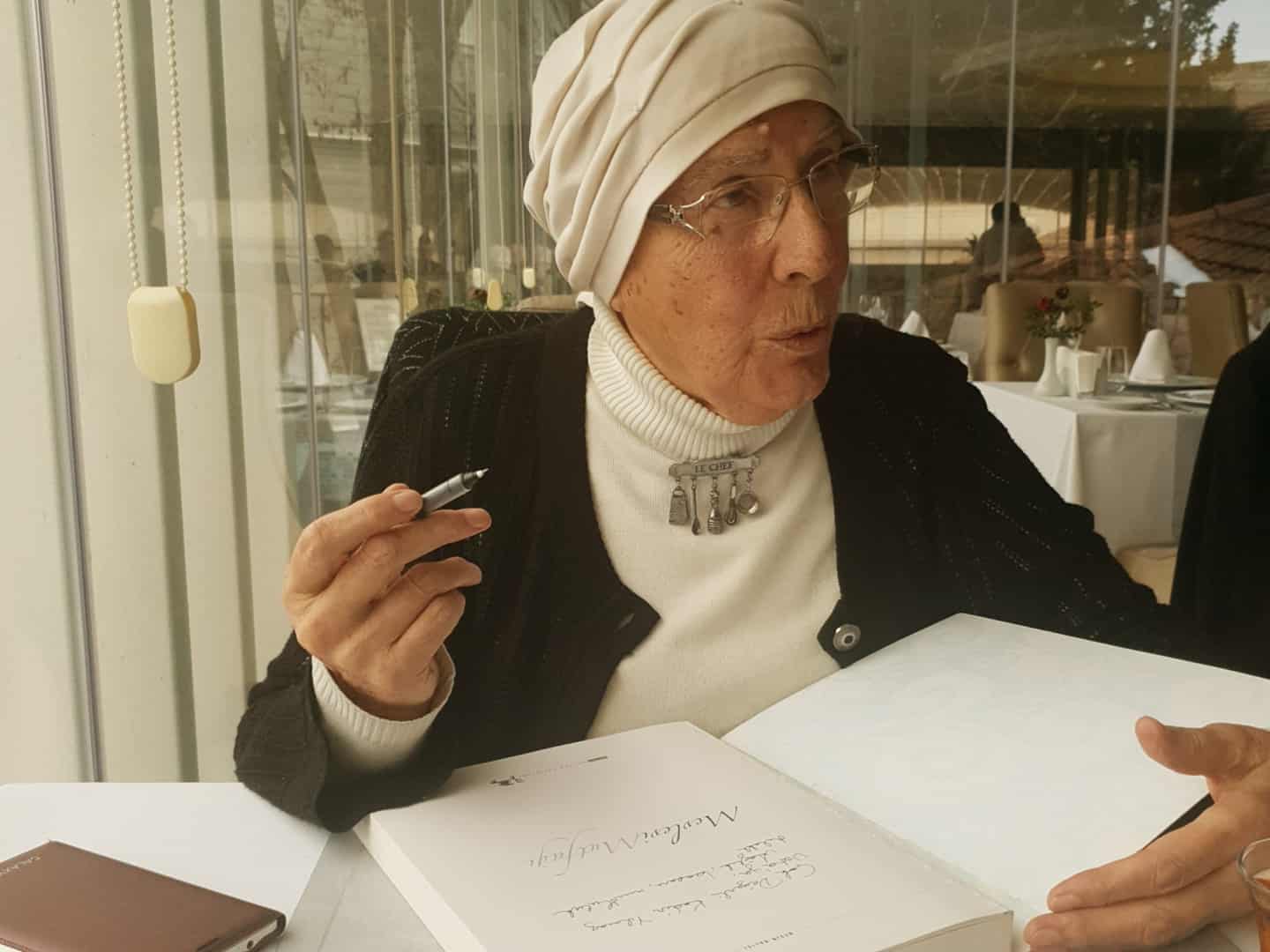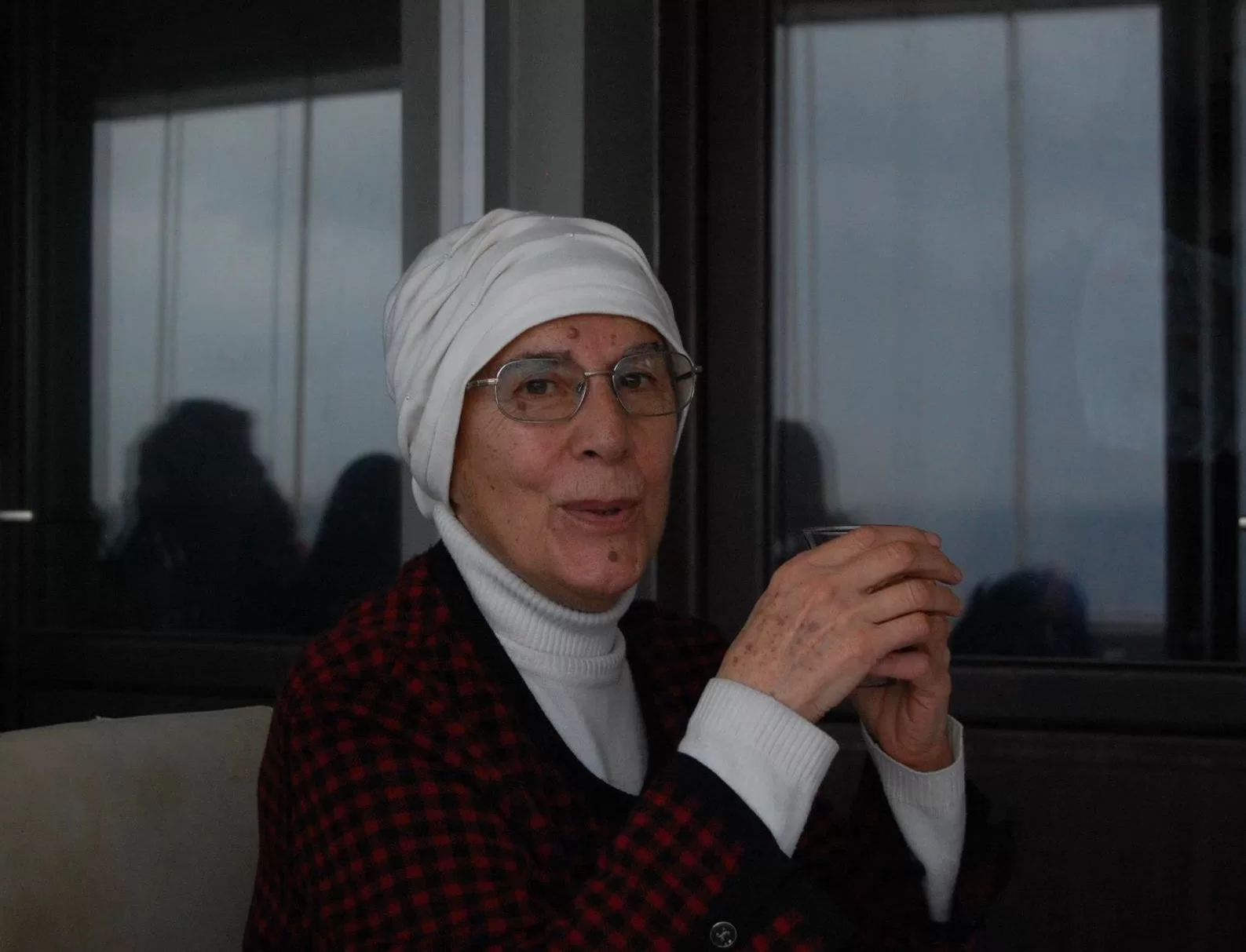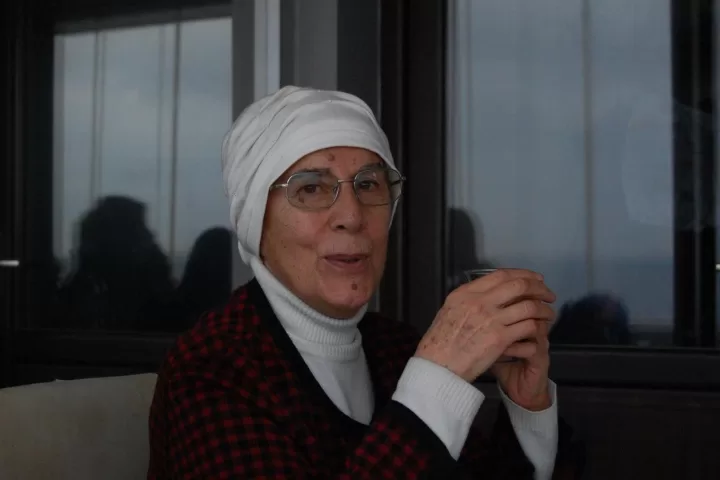It should be safe to say that we are a nation that prides itself on its cuisine but does not make any effort to preserve it. Considering the inadequacy of studies on food culture and history from the Ministry of Culture and Tourism -which should be working in this field- to our academies, I think it will not be difficult for us to understand how important an effort Lady Nevin Halıcı is making for our culture and history.
Nevin Halıcı, who devoted her life to the preservation of our food memory and palate culture with the books he published, received the Gourmand Cookbook Award with her book “Sufi Cuisine”. The author, who also received the World Book Award in the category of “Best Gastronomy Book of the Year” for her “Dictionary of Explained Food and Culinary Terms”, has many achievements and awards. We asked Nevin Halıcı questions about her writing, our food culture, our history…

As a food writer, how do you see the difference in terms of labor from other writers and types of writing? How does it feel to describe food?
-Until recently, food literature consisted only of recipes. Today, it has been realized that food is an important branch of culture. As such, food writing has started to be handled from a cultural perspective. In my opinion, there is no difference in terms of labor from other types of writing. Each writer writes on his or her own subject, the labor is the same… As for the feeling of describing food, food is actually a tangible object of taste and pleasure, but when you deal with its cultural aspect and describe this aspect, it takes on a mythical air. Especially when you come across a food or a food event that has not been recorded in research, you are fascinated. As one of the first people to work on the cultural aspects of food, I can say that I have experienced this pleasure many times and I am very happy.
In your recent articles you talk about the changing names of foods. Cheese candy has changed to Mevlana candy; Konya oven kebab has changed to tandoori kebab. What is the reason for such name changes? What are the drawbacks that you oppose this situation?
-Food culture is a subject that is not taken seriously by the general public. Many food names are changed for various reasons. This may cause mistakes in our food culture in the future. Cheese candy is a candy that is used both in our classical cuisine and in our local cuisines. Today, in Konya, its name has been changed to Mevlana candy. In fact, it is not right to use the name of the great Mevlana in the wrong places…The transformation of oven kebab into ‘tandoori’ is also wrong, in Konya, apart from oven kebab, there is also a delicious kebab called ‘çebiç asmak or tandoori lamb’ which is cooked in a tandoor. Which one should I mention! There are changes like this in other provinces as well. We should avoid changing the name of our food as it may cause confusion in the future.
When did serious studies on food and food culture begin in our country? We always boast that we have a rich cuisine, but are we doing enough to protect and develop it?
-Yes, we really have a very rich cuisine. The most important feature of Turkish cuisine is that it has a great variety in every branch of culinary art, from soups to desserts.
Serious studies on food culture in our country were first initiated by the Konya Tourism Association in the 1970s. The activities initiated by President Feyzi Halıcı with cooking competitions attracted the attention of Cihat Baban, then Minister of Tourism and Culture, and a culinary symposium was held in Ankara in 1980. The following year, Konya Tourism Association organized a symposium. The association also recognized the value of regional cuisines and initiated research on the basis of provinces and regions. It published Traditional Konya Foods, Aegean Region Foods, Mediterranean Region Foods. Southeastern Anatolia Region Foods and Black Sea Region Foods were also continued by us.
Claudia Roden, who came to Turkey in the early 1980s for culinary research, was sent to Konya by the then Minister of Tourism and Culture. Roden, who admired the work of the association, suggested to Feyzi Halıcı that they should open their culinary studies abroad together. Thus, International Food Congresses were initiated in honor of the 700th death anniversary of Ateshbaz-i Veli, Mevlana’s cook. Started in 1986 and held every two years until 1994, these five congresses brought the world’s most famous food authorities to Turkey and were instrumental in the recognition of Turkish cuisine abroad. The famous British editor Jill Norman published the book Nevin Halıcı’s Turkish Cookbook. After this, promotional activities were carried out in many countries abroad.
After these congresses, culinary and culinary culture was recognized in Turkey and culinary studies were initiated.
Culinary studies, which have been carried out until today with the efforts of individuals and various associations, should be continued with serious research by the Ministry of Culture.

Cooking departments have increased in our universities. Food culture is now being handled professionally. Does this improve our food culture or lead to industrialization (degeneration)?
-If done consciously, it improves food culture, no doubt. It can also degenerate if it is attempted without knowing Turkish Cuisine as a root… For this reason, in the cooking schools that are proliferating today, a key Turkish Cuisine training should be given first, and then other trainings should be given.
As a writer who has been devoting his heart and effort to this field for years and who has written about the cuisine of every region of Turkey, you started to research Central Asian cuisine. What is the purpose of this? Is it necessary to associate the food culture with historical ties?
-Since I started this work, I felt that Turkish Cuisine, like Turkish History, should be dealt with in the periods of Central Asia and the Migration Road, Seljuk, Ottoman and Republican periods. However, my work on this subject was delayed due to other studies. Because there were many deficiencies in the Turkish Culinary literature and it was necessary to complete them… Such as local records and a culinary dictionary… After writing the Seljuk period, I realized that it was necessary to complete Central Asia and the other three books, so I started on Central Asia.
Many cookbooks are being written today. Some of them compile recipes based on hearsay. How do you create your recipes?
-My aim is to present the uncomplicated Turkish Cuisine, uninfluenced by foreign cuisines, as a key. For this reason, I prepared a work called Turkish Cuisine, which I translated from the old script and updated.The recipes in this work were the recipes of Ottoman Istanbul, that is, the famous Turkish cuisine.The main recipes of our classical cuisine have been updated and standardized.I also standardize the recipes related to local cuisine by taking them from the source people.In such studies, it is important to give the original without distorting it. Different types of culinary studies can also be done.
“Because the training to become a dervish starts in the kitchen.”
As a Konyaian, you have written about Konya cuisine, especially Mevlevi cuisine. It is understood that you are interested in Sufi cuisine. While writing this work, what was the most important subject that you said ‘I am glad I put this in the book’?
-Konya Cuisine is a kitchen that bears traces of the Seljuks and is of great importance among Anatolian cuisines. It is a magnificent kitchen with its chef team, black dinner set, two salty dessert sets, a dessert set, neighbor lifting, etc. menus and dishes and features carried from the Seljuks to the present day.
As for the Mevlevi Cuisine, the Mevlevis have walked the path of reaching God through every beautiful subject. The kitchen is one of the most important of these subjects. Because the training to become a dervish starts in the kitchen. Here everyone receives training according to their ability. At the end of a thousand and one days, he completes his training and becomes a dervish. In the 13th century, certain rules were applied in the kitchen. The first teaming is seen in the Mevlevi kitchen. Table layouts, food services, special day meals are all regulated. In addition, as in everything else, good taste and presentation were given importance in meals. In the 19th century Risal of Ali Eşref Dede, gold leaf kadayifs are mentioned. The Mevlevi Cuisine set an example for the Ottoman Cuisine with these rules developed in Konya.
While writing this book, I thought that I am glad I wrote this book. I think every aspect of the book is good… Everything from Sufism to the couplets of the great Mevlana and the love and respect in his view of food has a delicacy and elegance… In addition, the fact that the dishes of that period lived in Konya Cuisine was a great chance for me to challenge the book.
Historically, Ottoman cuisine seems to be the determinant of Turkish cuisine. Do you think so?
-Turkish cuisine is a synthesis of what the Turks brought from Central Asia, what they acquired on the road and what they acquired from the civilizations that preceded them when they came to Anatolia.
I think that Seljuk cuisine was decisive with the characteristics I have described above. The Ottoman cuisine developed this Seljuk cuisine as much as possible in the palace, dervish lodge, cooks and mansions. Foreigners living in Istanbul recognized this cuisine and wrote about it in their works, which is why Turkish Cuisine became famous as one of the three famous cuisines of the world at that time.
We have always talked about our own cuisine. When we look at world cuisine, which one attracts your attention the most?
-Good ones from every cuisine… I can say goat cheeses from Norway, Roquefort cheese from France, some fish dishes from Spain, some seafood other than sushi from Japan, some fish dishes with coconut paste from Indonesia. I always prefer the food from our own kitchen.
Finally, are there any books on world cuisine that you would recommend your readers to read?
If they want to get to know the cuisine of a country, I can advise them to research and select the best book of that country and read it. We are weak in our country, but there are so many good books written about food in the west…
If you want to read the interview in Turkish: “Derviş olma yolundaki eğitim mutfaktan başlar.”
Who is Nevin Halıcı:
Nevin Halıcı is a researcher and writer on Turkish culinary culture and food. Her father is Sabri Halıcı and her mother is Hanım Halıcı. She is the sister of poet, writer and former politician Feyzi Halıcı, aunt of MP Emrehan Halıcı and aunt of sociology professor Nilgün Çelebi.
Artworks
Geleneksel Konya Yemekleri (1979)
Ege Bölgesi Yemekleri (1981)
Akdeniz Bölgesi Yemekleri (1983)
Türk Mutfağı (1985-1990)
Nevin Halıcı’s Turkish Cookbook (1989)
Das Türkısche Kochbuch Nevin Halıcı (1990)
Güneydoğu Anadolu Bölgesi Yemekleri (1991)
Siniden Tepsiye Klasik Türk Mutfağı (1999)
Konya’da Kışlık Yiyecekler Üzerine Bir Araştırma (2000)
Karadeniz Bölgesi Yemekleri (2001)
Sufi Cuisine (2005). London: Saqi Books.
Konya Mutfak Kültürü ve Konya Yemekleri (2005)
Mevlevi Mutfağı (2007). İstanbul: Metro Kültür Yayınları.
Türk Mutfağı (2009). İstanbul: Oğlak Yayıncılık.
Konya Mutfağı (2011)
Açıklamalı Yemek ve Mutfak Terimleri Sözlüğü(2013). İstanbul: Oğlak Yayıncılık.
Geçmişin İzleriyle Sille Mutfağı (2014). Konya: Selçuklu Belediyesi Yayınları.
Selçuklu Dönemi Mutfağı (2015). Konya: Selçuklu Belediyesi Yayınları.


